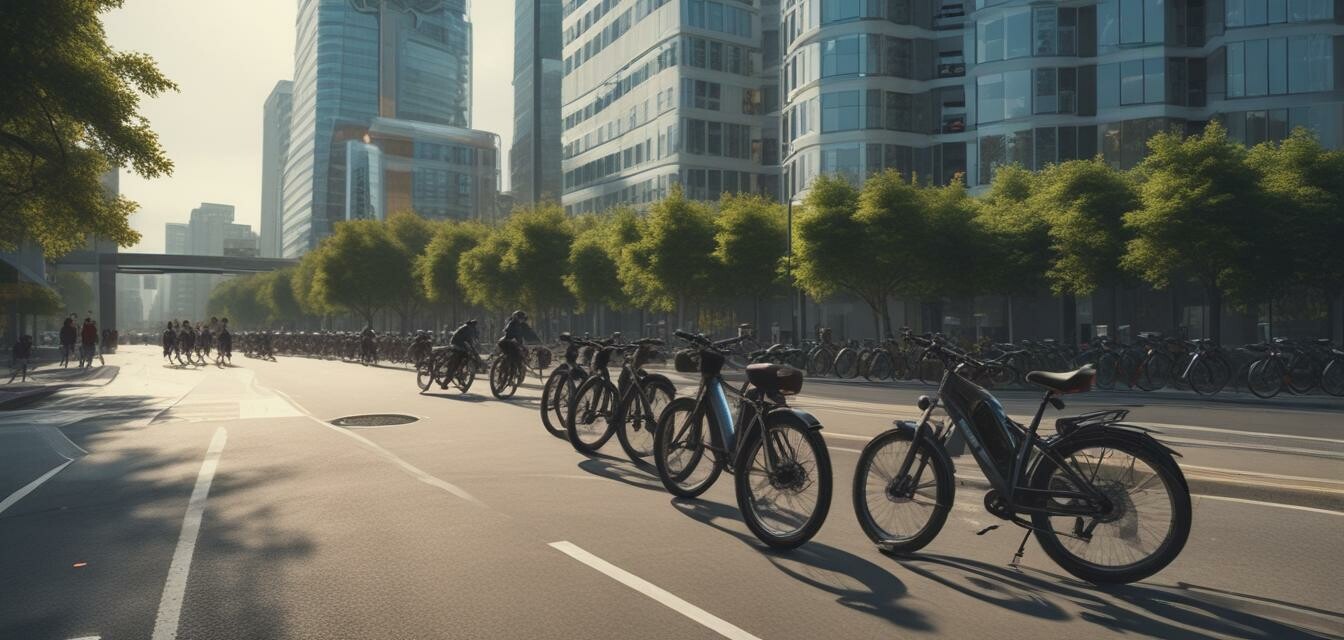
The Future of Electric Bikes in Urban Settings
Key Takeaways
- Electric bikes are transforming urban commuting in Ireland.
- Innovations in battery technology are increasing the efficiency and convenience of e-bikes.
- Urban policies and infrastructure are shifting towards supporting electric bike adoption.
- Sustainability is a significant driver in the adoption of electric bikes.
- User-friendly designs are catering to a broader demographic, encouraging more people to cycle.
As urban areas become more congested, and the need for sustainable transportation solutions continues to rise, electric bikes (e-bikes) are leading the way in transforming urban commuting in Ireland. With advancements in technology and shifts in urban policy, the future of electric bikes is not just promising; it's vital for modern cities. In this article, we delve into the upcoming trends and innovations that are shaping the future of e-bikes and their role in our urban environments.
Emerging trends in electric bikes
The electric bike industry is witnessing several significant trends that are set to reshape urban commuting. Let's explore some of these:
- Greater battery efficiency: Innovations in battery technology are reducing charging times and extending range, making e-bikes more appealing for daily commuting.
- Integration with smart technology: E-bikes are becoming more connected, offering features like GPS navigation, theft prevention, and integration with smartphone apps.
- Folding electric bikes: The growing demand for space-saving solutions is leading to advancements in folding bike designs, making it easier for commuters to store and transport their e-bikes.
- Increased investment in infrastructure: Cities are increasingly supporting cycling by developing dedicated bike lanes and securing parking spaces for e-bikes.
- Sustainability initiatives: The push for greener transportation options is fueling government incentives and support for electric bike purchases.
The role of technology in shaping e-bikes
Technology plays a crucial role in the evolution of electric bikes. Here are some of the key innovations we can expect in the near future:
| Innovation | Description |
|---|---|
| Smart batteries | Batteries that adapt their charge based on usage patterns, providing longer lifespans and better performance. |
| Advanced motors | More powerful motors that offer better acceleration and hill-climbing capabilities. |
| Connected apps | Mobile applications that track performance, maintenance needs, and route optimization. |
| Anti-theft systems | Integrated security features such as alarms and GPS tracking to deter theft. |
Urban policy shifts supporting electric bikes
As cities strive for sustainability and reduced traffic congestion, many are adapting their policies to support the growing popularity of electric bikes. Here are some examples of how urban policies are changing:
- Subsidies and incentives: Many local governments are providing subsidies to encourage residents to purchase electric bikes, making them more accessible and affordable.
- Improved cycling infrastructure: Investments are being made to develop or expand bike lanes, creating a safer environment for cyclists.
- Public e-bike sharing programs: Some cities are introducing e-bike sharing schemes, giving residents a convenient option for short trips and encouraging more people to consider cycling for their commute.
Sustainability and its impact on urban commuting
Electric bikes are seen as a sustainable solution to urban transportation issues. Their ability to reduce emissions and ease traffic congestion makes them an attractive alternative to traditional vehicles. Here are some aspects of how e-bikes contribute to sustainability:
| Benefit | Description |
|---|---|
| Lower emissions | E-bikes produce significantly fewer emissions than cars and motorcycles, contributing to a cleaner environment. |
| Reduced traffic congestion | More people cycling means fewer cars on the road, leading to less congestion and shorter commute times. |
| Health benefits | Cycling is a great form of exercise, contributing to public health while reducing the need for healthcare resources. |
Future designs and user adaptations
The design of electric bikes is constantly evolving to meet the needs of urban cyclists. Key design trends include:
- Ergonomic designs: Bikes that prioritize rider comfort and usability are becoming more common, encouraging longer rides.
- Aesthetic appeal: Attractive designs targeting a broader audience are allowing electric bikes to break away from their utilitarian image.
- Customizable options: The ability to customize bikes with different accessories and features appeals to individual preferences.
The impact of shared mobility on electric bike adoption
Shared mobility services, including e-bike sharing systems, are gaining traction in urban areas. By providing access to electric bikes without the need to purchase one, these services create a more widespread acceptance of e-bikes among the general public. As more cities invest in bike-sharing infrastructure, the opportunity for residents to experience riding an e-bike will inevitably lead to increased personal adoption.
Conclusion
The future of electric bikes in urban settings is bright. With technological innovations, supportive urban policies, and a focus on sustainability, e-bikes are set to revolutionize how we navigate our cities. As we embrace these changes, we can look forward to a future where commuting is not only more sustainable but also more enjoyable for everyone.
Pros
- Enhanced commuting experience with increased efficiency.
- Contributes to cleaner urban environments.
- Technological innovations making e-bikes more reliable.
- Encourages healthier lifestyles through physical activity.
- Reduced dependence on traditional vehicles.
Cons
- Initial purchase costs can be high.
- Limited infrastructure in certain areas.
- Potential maintenance issues with technological components.
Want to know more?
If you're interested in further enhancing your knowledge about commuting options, you can check out our articles on bike locks and security and electric bike conversion kits. For those looking to maintain their bikes, consider visiting our section on bike maintenance tools. Also, our buying guides offer thorough insights on what to look for when selecting an electric bike.